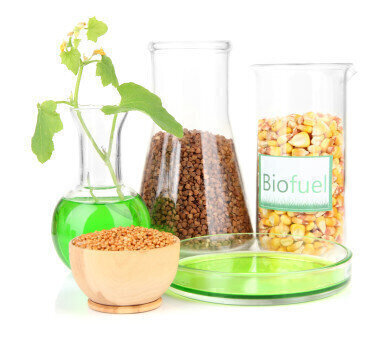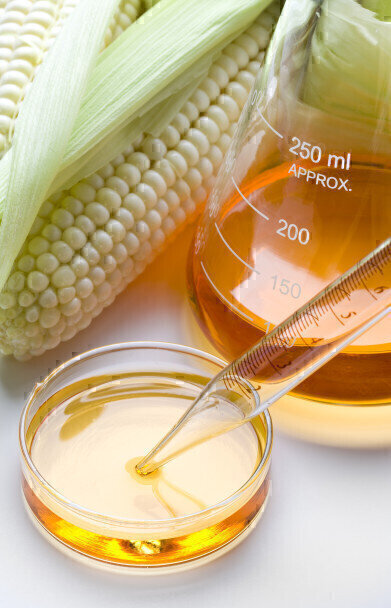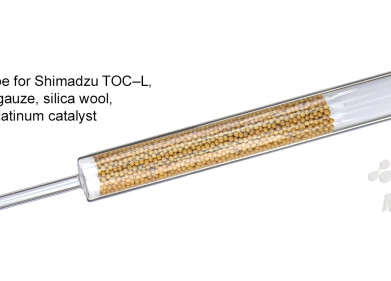Laboratory Products
Unifying the Biofuels Industry
Oct 20 2017
Biofuel is becoming increasingly popular as a valid alternative fuel similar to conventional or ‘fossil’ diesel. Biofuels can be produced from straight vegetable oil, animal oil/fats, tallow and waste cooking oil. The largest possible source of suitable oil comes from oil crops such as rapeseed, palm or soybean. All of these sources can vary significantly in their colours.
ASTM Standards for Biofuel Analysis
However, biofuels are generally considered to be chemically less stable than mineral oils. Quality control is therefore vital. Prior to use as a commercial fuel, the finished biodiesel must be analysed using highly-specified analytical equipment to ensure the fuel meets any required specifications. The most important aspects of biodiesel production to ensure trouble free operation in diesel engines are:
- Complete Reaction
- Removal of Glycerin
- Removal of Catalyst
- Removal of Alcohol
- Absence of Free Fatty Acids
Much of the governance dictating the quality and specifications of biofuels is being driven by the ASTM (the American Society for Testing and Materials), a globally recognised leader in the development and delivery of voluntary consensus standards. A full list of the ASTM standards currently being implemented in this industry can be found on their website at www.astm.org.
Colour Measurement For Quality Control
A manufacturer of colour measurement instruments, the Tintometer® Group’s primary involvement with ASTM is around implementing the standards it defines such as ASTM D1500, ASTM D6045 and ASTM D7843. The ASTM D1500 colour scale is widely used for the grading of petroleum products such as lubricating oils, heating oils and traditional diesel fuel oils. Other petroleum products that do not fall within the scope of ASTM D1500, such as undyed gasoline, white spirit, petroleum wax and kerosene, may be graded using the Saybolt test ASTM D156. ASTM D6045 for colour testing of petroleum products by the automatic tristimulus method covers electronic methods of determining Saybolt Colour. The additional performance criteria quoted in the ASTM specifications such as accuracy; linearity and reproducibility are all met by select automatic colorimeters.
of the recent emphasis on biofuels is the result of the petroleum industry being notoriously volatile over recent years: having a seesaw effect on pricing and influencing the cost of living across the world. With every dollar counting, controlling price levels to minimise this seesaw effect is paramount. Maximising efficiency within the refineries is vital.
Within this industry, the colour of petroleum is an important indication of the status of the refining process from its crude state to its deliverables. Pricing across the world is set, partly, against the colour of the product. An important part of the refining procedure is, therefore, colour measurement. Colour is also an indication of type and quality. In some applications it is used as a means of recognition as is the case with aviation fuel and ships diesel fuel.
Since ASTM is internationally recognised, it is used throughout the petroleum industry from Australia to Zambia, overcoming international and technical barriers. And this is nothing new. The tentative methods (D155-23T) for colour standards for petroleum were submitted in 1923 with first colorimetric instruments appearing as early as that year.
Product Quality in Biofuels
There are several factors that can affect the production of quality fuel from: feedstock quality; the production process; post production; analytical capability; and handling and storage. Though oil straight from the agricultural industry would represent the greatest potential source it is not being produced commercially simply because the raw oil is too expensive. After the additional cost of transesterification, it is simply too expensive to compete successfully with fossil diesel.
However, the industry is now looking to refocus on non-food feedstocks and alternative technologies that would allow the use of all potential feedstocks, including those available now and those available in the future. We could now be looking at a straighter path forward to continue the replacement of petroleum diesel fuel with renewable, sustainable, domestically produced and biodegradable biodiesel fuel.
The Challenge Ahead
Multi-feed ingredients can also result in multi-coloured biofuel. Whereas most of the differently coloured biodiesel fuels meet the ASTM D6751 specifications, not all differently coloured biodiesel fuels are accepted by blenders. In fact, many blenders already have internal colour specifications for their biofuel purchasing. This non-acceptance by the blenders of differently coloured biofuels is perfectly in-line with the fact that, per above, petroleum diesel also has different colours depending on where we are at in the refining process. By introducing similar colour standards to the biofuels industry, international clarification and acceptance could be achieved more rapidly.
Digital Edition
Lab Asia 31.2 April 2024
April 2024
In This Edition Chromatography Articles - Approaches to troubleshooting an SPE method for the analysis of oligonucleotides (pt i) - High-precision liquid flow processes demand full fluidic c...
View all digital editions
Events
Apr 22 2024 Marrakech, Morroco
Making Pharmaceuticals Exhibition & Conference
Apr 23 2024 Coventry, UK
Apr 23 2024 Kintex, South Korea
Apr 23 2024 Seoul, South Korea
Apr 24 2024 Jakarta, Indonesia


.jpg)


.jpg)













